Khachkars (pronounced: kosh - cars)
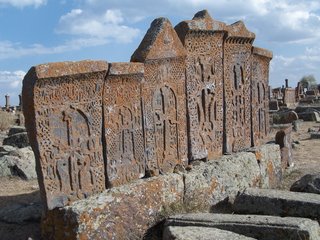
One afternoon, after working on the homes, we stopped by Noratus, which is at the western shore of the Lake Sevan. It was one of those evenings when we were all pretty tired from a long day of painting and sanding. I know that I was thinking, as we drove along in our bus, that I would almost rather skip the sightseeing and just go back to the hotel.
However, we stopped and, like dutiful students, we trooped out of the bus and up the hill to the cemetery. And I'm so glad we did. What we found was a cemetery with over 900 "khachkars", which are carved stones. Usually they were erected to honor someone's death, but there are also khachkars that memorialize a war or act as a form of protection from natural disaster.
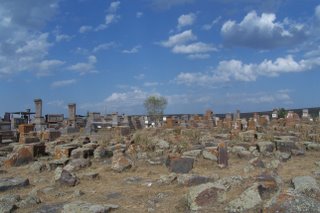
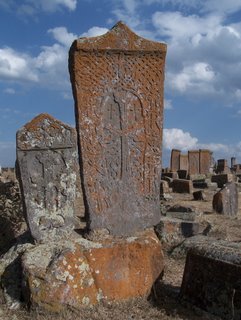
It was amazing walking amongst these stones, knowing that some were made over 1,000 years ago.
Even more interesting were a few of the villagers who were up there as well. As we walked towards the cemetery three very old women approached us with sox to sell. The sheep were all around them, and one women was knitting in front of us - using what must have been recently sheered wool from her flock.


Also, a group of children followed us and gave us little flowers. I asked our guide if they were looking for money, but she said that they weren't - they were just giving us small gifts. A few of them were learning English in school, and practiced on us. "What is your name?" they would say. We would respond with our names and ask them, which they would in turn tell us. Then they would ask, "how are you?" These were the only phrases they knew - but it was cute hearing them practice.
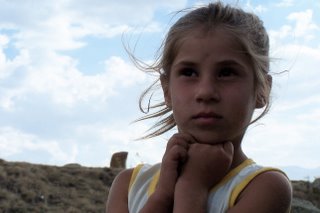
We stayed for about 20 minutes, learning about the various styles of khachkars throughout the ages and examining the stones. It was another one of so many moments when I was reminded that I was far, far away from the United States. And I was in awe of the history and age of what surrounded me.
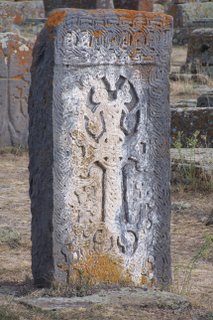



0 Comments:
Post a Comment
<< Home